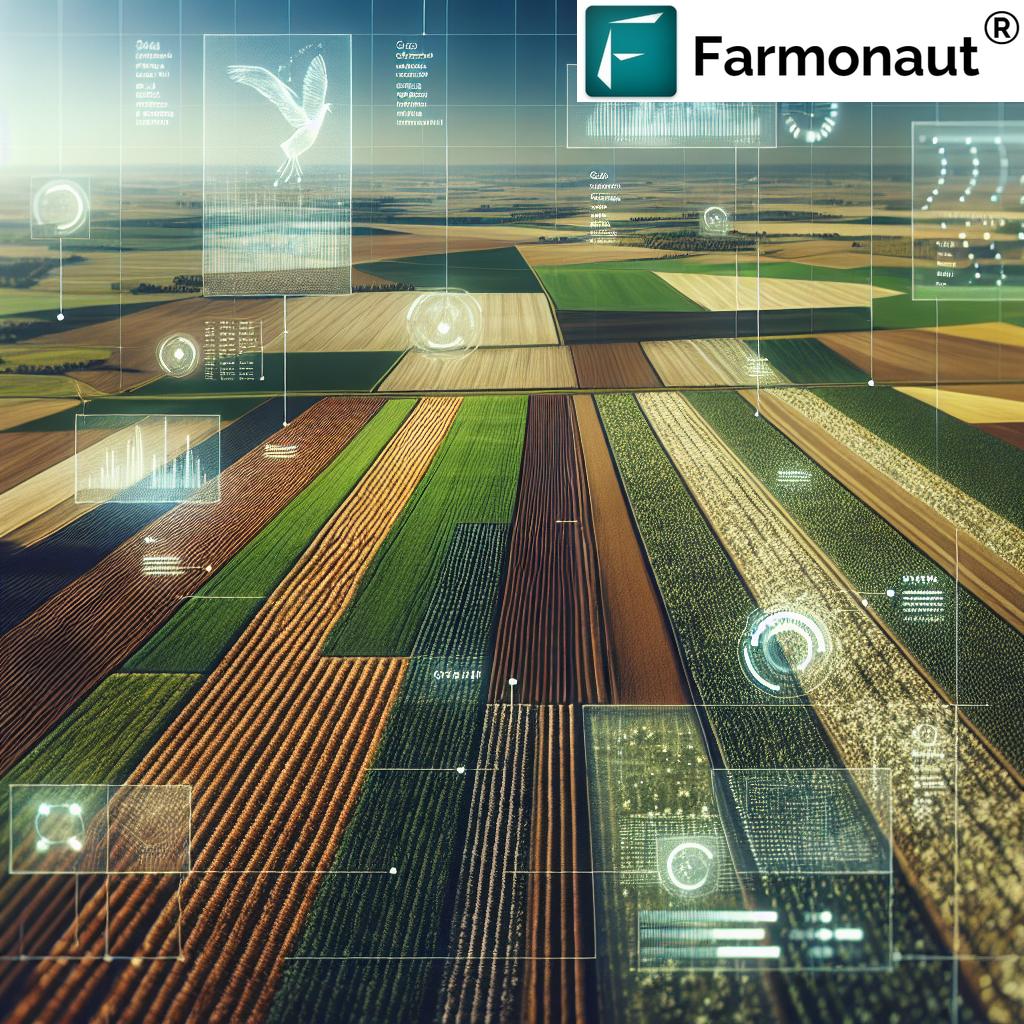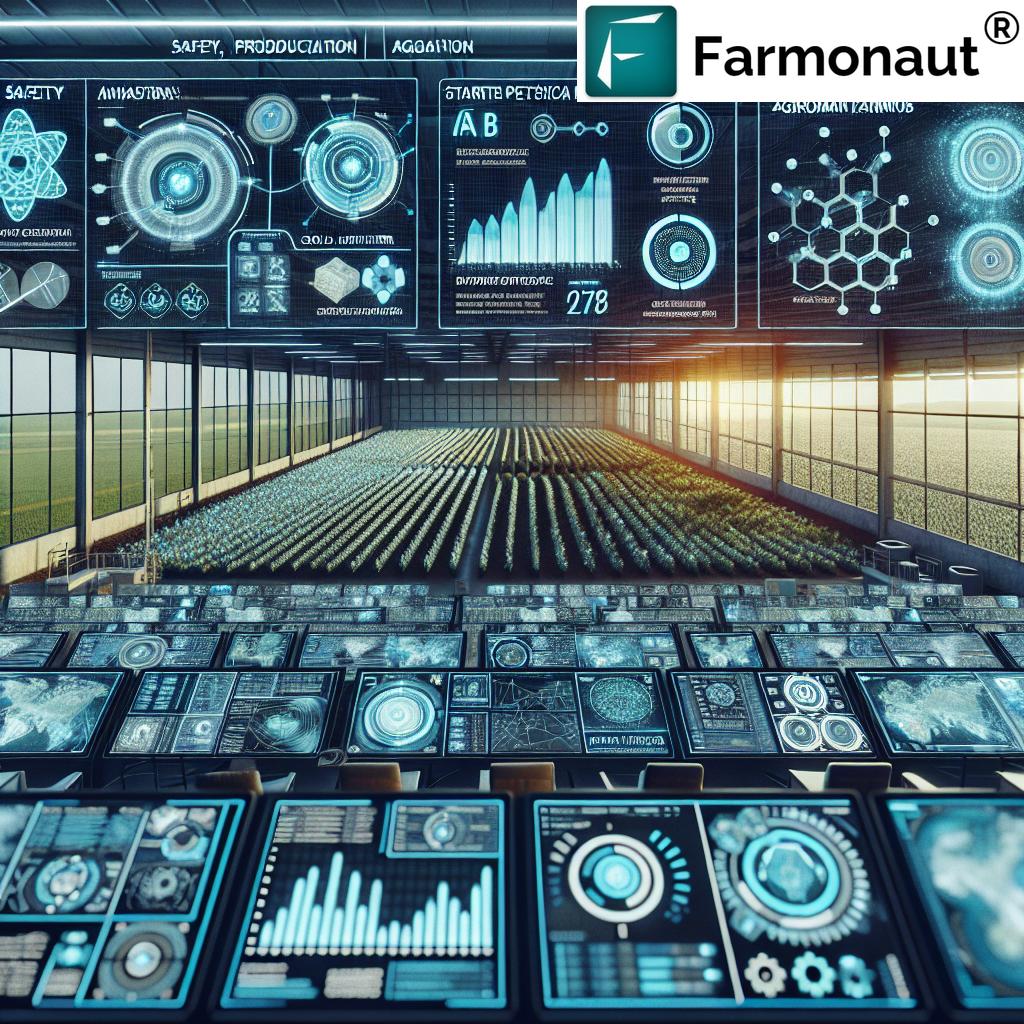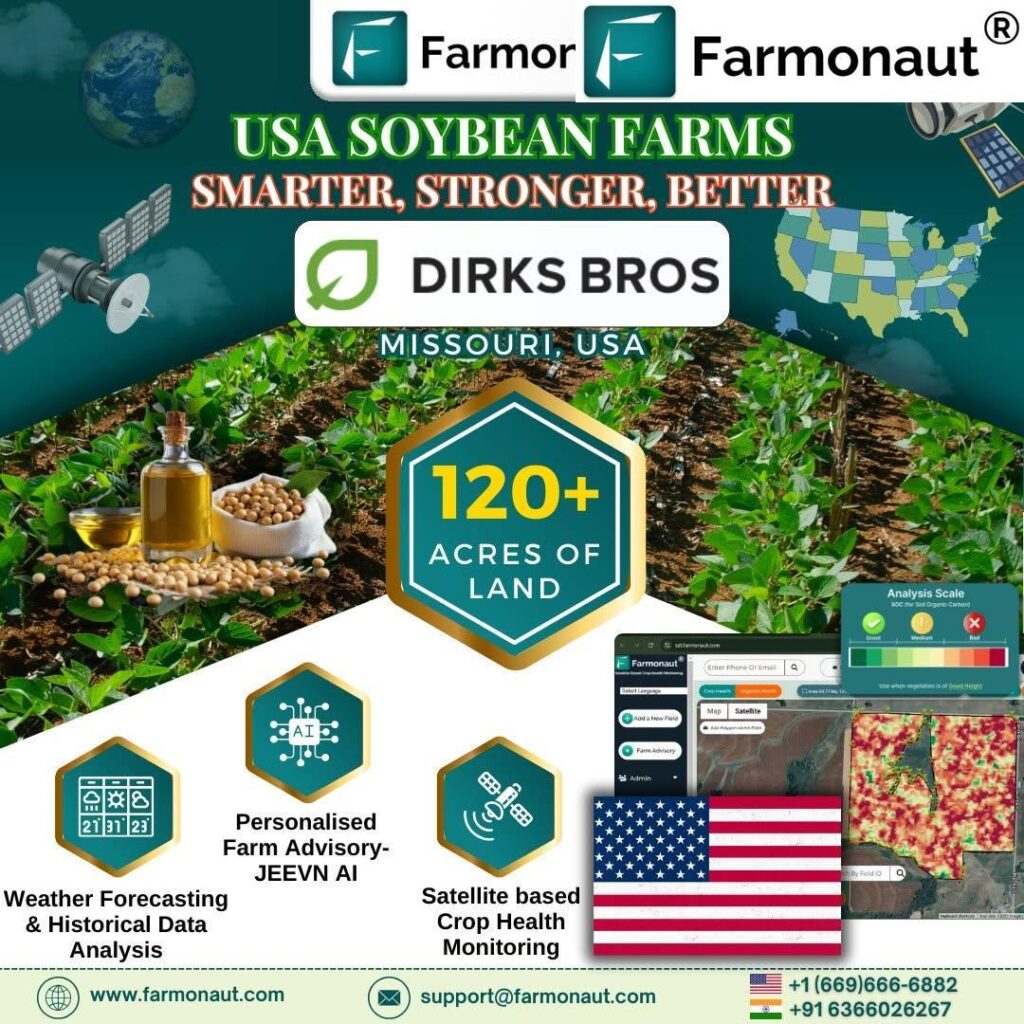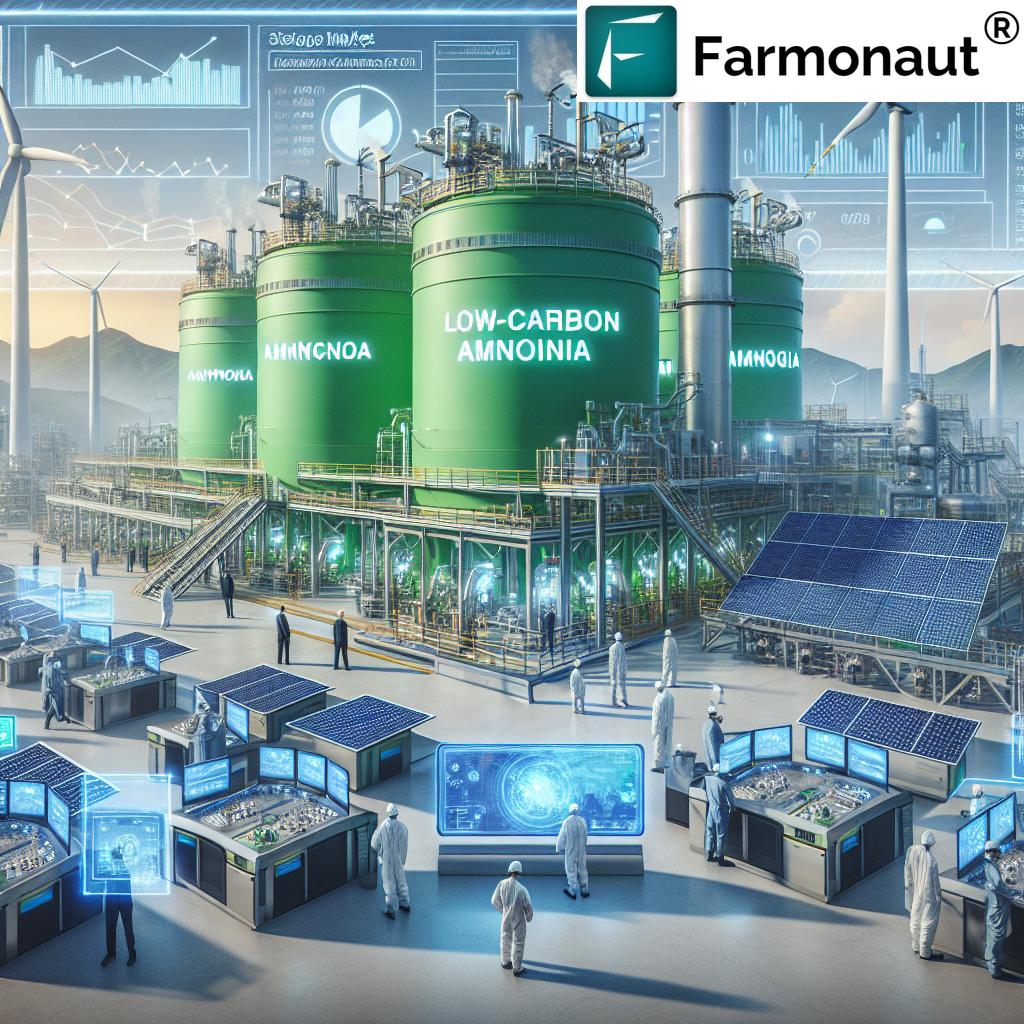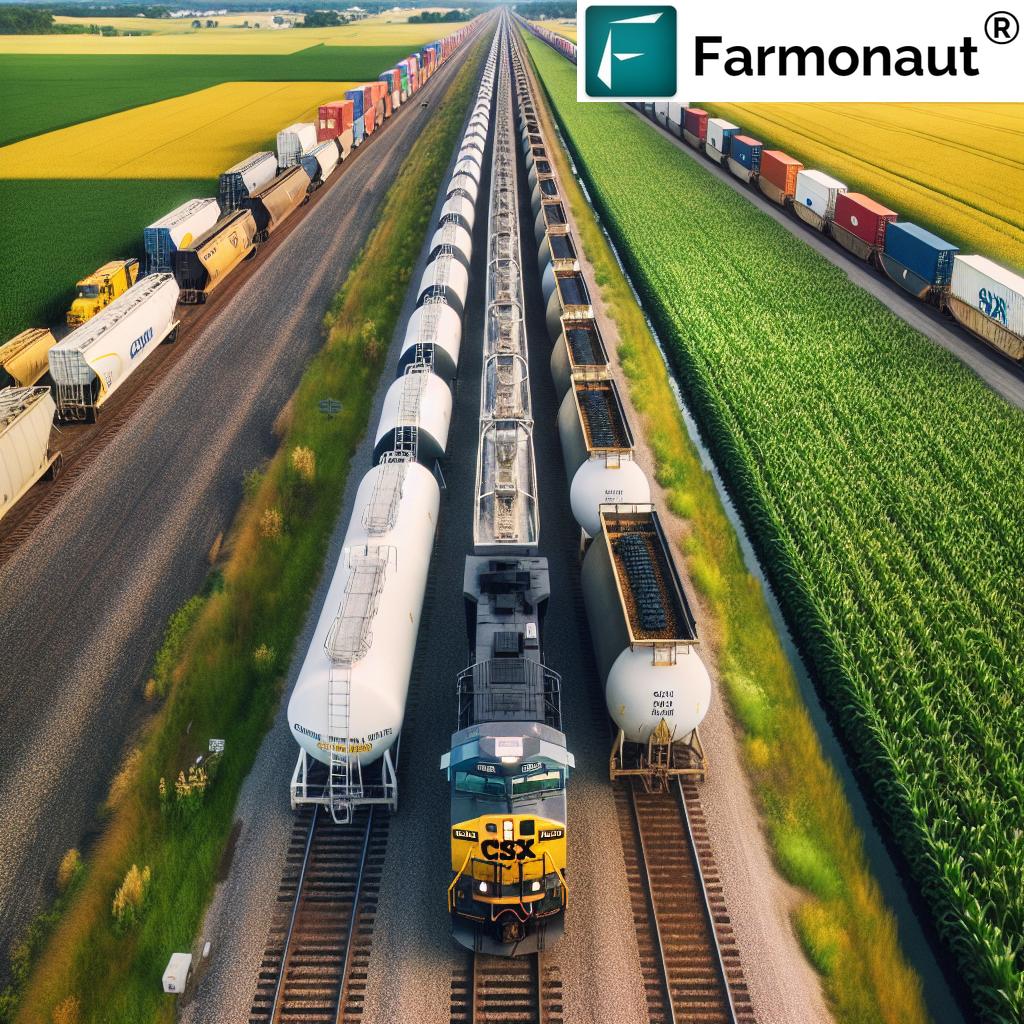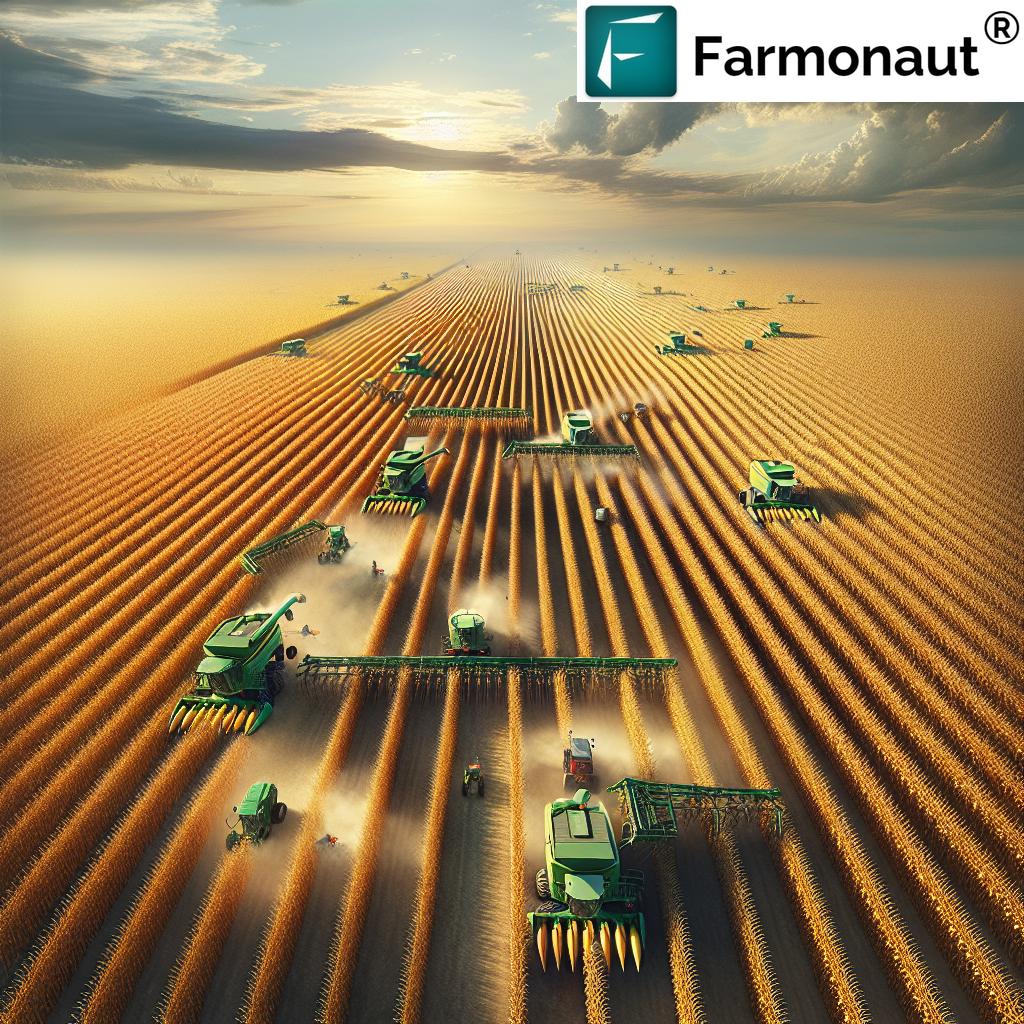Artificial Intelligence in Military Drones: Top 7 Innovations Transforming Technology & Precision Farming
Table of Contents
- Introduction: AI in Drones – Shaping the Future
- Quick Trivia: AI’s Power on the Farm
- The Evolution of Artificial Intelligence in Military Drones
- Top 7 AI Innovations in Military Drones
- Comparison Table: Top 7 AI Innovations in Military Drones
- From Battlefield to Farmland: Adapting Drone AI to Precision Farming Technology
- More Trivia: AI Boosts Crop Monitoring Accuracy
- AI-Powered Drones in Agriculture: Key Applications
- Sustainable Farming Practices with Drones: Environmental Impacts and Benefits
- Farmonaut: Making Precision Agriculture Accessible Worldwide
- Farmonaut Subscription Plans
- Challenges in Adoption & The Path Forward
- Frequently Asked Questions – AI in Drones & Agriculture
- Conclusion: AI, Drones, and the Future of Sustainable Farming
Introduction: AI in Drones – Shaping the Future
Artificial intelligence (AI) is ushering in a new era of efficiency, precision, and sustainability across numerous domains. Nowhere is this more evident than in the remarkable evolution of drones—from battlefield “unmanned aerial vehicles” (UAVs) performing high-stakes missions to AI-powered drones in agriculture transforming the way we grow food.
Military development has driven some of the most advanced AI technologies in drones, and today, we see many of these innovations crossing over into precision farming technology, forestry, and other vital sectors. In this in-depth article, we’ll explore the top 7 AI innovations in military drones, reveal how they’re revolutionizing drone crop monitoring and farm management, and share actionable insights for sustainable farming practices with drones.
“AI-powered drones can analyze over 1,000 acres of farmland in a single flight using advanced data processing algorithms.”
The Evolution of Artificial Intelligence in Military Drones
The evolution of drones began with simple surveillance platforms. Early unmanned aerial vehicles acted as remote-controlled eyes for military operations, relying heavily on human pilots and operators. However, rapid advancements in sensor technologies, AI, and machine learning have produced modern UAVs capable of autonomous navigation, mission automation, and real-time threat assessment.
- Modern military UAVs like the Boeing MQ-28 Ghost Bat leverage AI-driven flight control, data analysis, and mission execution, even in GPS-denied or hostile environments (source: Wikipedia: MQ-28 Ghost Bat).
- These unmanned aerial systems use advanced machine learning algorithms that analyze sensor data instantaneously, allowing the drones to identify, assess, and respond to threats without direct human intervention.
- The AI capabilities developed for military drones—such as autonomous navigation, threat detection, resource management, and mission automation—are increasingly being adapted to boost efficiency and sustainability in other sectors, most notably agriculture.
Top 7 AI Innovations in Military Drones
AI-powered military drones are at the cutting edge of modern technology. Their core innovations are not only redefining military operations but also providing a blueprint for precision agriculture, forestry management, and environmental monitoring. Let’s explore the top 7 AI-driven breakthroughs powering today’s UAVs.
- Autonomous Navigation & Terrain Mapping
AI-powered autonomous navigation enables drones to operate independently, even in GPS-denied environments. This innovation relies on real-time sensor data, computer vision, and deep learning algorithms to interpret and adapt to complex terrains, avoid obstacles, and optimize flight paths. Autonomous navigation radically reduces the risk of pilot error and enables drones to perform missions in challenging or unknown environments. In agriculture, the same principles allow autonomous drones for agriculture to survey fields and soil, enabling widespread adoption of precision farming technology.
- AI-Based Sensor Data Fusion & Real-Time Analysis
Modern military drones integrate data from multiple sensors—including visual, infrared, acoustic, and radar—using AI algorithms for holistic situational awareness. This fusion allows the system to “see” and “understand” its environment, detecting threats, terrain features, and targets with unprecedented speed. In agriculture, similar multi-sensor fusion enables drone data analysis in farming, allowing crop monitoring, disease detection, and soil analysis using drones—all in a single flight!
- Threat Assessment and Autonomous Response
AI transforms raw data into actionable intelligence. Military drones now use advanced machine learning algorithms for threat assessment. The system can identify hostile activity, classify threats, and autonomously respond—from evasive action to notification, and even deploying countermeasures. These innovations reduce the need for direct human intervention, enhancing operational safety and reducing risk. In agriculture, AI for pest and disease detection allows fast, targeted pesticide application, minimizing crop losses and input costs.
- Automated Mission Planning & Execution
Drones equipped with AI can autonomously plan, execute, and adjust missions in real time. Military UAVs conduct autonomous surveillance, reconnaissance, and logistics delivery. In farming, this translates into autonomous drone crop monitoring, irrigation scheduling, planting, and spraying—allowing for efficient deployment of resources and greater precision in agricultural operations.
- Swarm Intelligence & Collaborative Drones
Swarm intelligence uses AI algorithms that allow multiple drones to operate as a cohesive unit. Instead of acting independently, swarms can:
- Coordinate to cover large areas
- Divide complex tasks (like search-and-rescue or surveillance)
- Adapt in real-time to changing environments
Swarm technology has applications in precision agricultural drone technology—from monitoring vast farm fields to identifying optimal places for targeted treatments or resource allocation.
- AI for Communications: Operating in GPS-Denied Environments
Military drones often face environments where GPS and communication signals are jammed or unreliable. Today’s advanced drones use AI to analyze backup sensor data (terrain imaging, inertial navigation, visual odometry) and maintain operational control. This strengthens drone reliability for both military missions and farming operations in remote areas with limited connectivity.
- Ethical AI: Compliance, Transparency & Legal Accountability
The growing autonomy of AI-powered military drones raises ethical and legal questions. Responsible military and agricultural applications require:
- Clear accountability
- Data transparency
- Respect for privacy and safety
International agreements like the Political Declaration on Responsible Military Use of AI and Autonomy aim to set standards. In agriculture, data ethics and secure management are essential when deploying drone crop monitoring and AI solutions on the farm.
Comparison Table: Top 7 AI Innovations in Military Drones
| Innovation Name | Brief Description | Est. Year of Mainstream Adoption | Military Efficiency Impact (%) | Relevance to Precision Agriculture | Estimated Cost Savings (%) |
|---|---|---|---|---|---|
| Autonomous Navigation | AI-driven terrain-adaptive navigation without GPS | 2020 | 30–40% | Yes | 25% |
| Sensor Data Fusion & Real-Time Analysis | Combining multi-sensor data for instant analysis and decision making | 2021 | 35% | Yes | 20–30% |
| Threat Assessment & Autonomous Response | AI-driven identification and response to threats | 2023 | 40–50% | Yes (Pest/Disease Detection) | 30–35% |
| Automated Mission Execution | Full-cycle mission planning, deployment, and re-routing | 2021 | 45% | Yes | 20–30% |
| Swarm Intelligence | Collaborative multiple drone operations | 2024 | 50%+ | Yes | Estimated up to 40% |
| AI-Driven Communications | Robust operations in signal/GPS-denied environments | 2021 | 25% | Yes | 15–20% |
| Ethical AI & Compliance | Transparent, accountable AI deployment | 2024 | N/A – Compliance | Yes | Indeterminate |
From Battlefield to Farmland: Adapting Drone AI to Precision Farming Technology
The most transformative drone AI breakthroughs in the military—like autonomous navigation, real-time sensor fusion, swarm intelligence, and automated mission execution—have paved the way for incredible advancements in agricultural drone technology. These cross-industry applications not only enhance crop yields, optimize resource use, and reduce environmental impact, but also make precision farming technology more accessible to farmers worldwide.
- Drone crop monitoring uses autonomous drones equipped with multispectral and hyperspectral sensors to survey fields, map crop health, and detect soil anomalies.
- Soil analysis using drones leverages AI algorithms to create high-precision nutrient and moisture maps, enabling large-scale and smallholder farm management.
- AI for pest and disease detection empowers farmers with early warning systems and targeted, cost-saving interventions through precise spraying or management recommendations, reducing chemical inputs and crop loss.
- Precision pesticide application optimizes chemical use by analyzing where, when, and how much to spray, minimizing environmental impact and carbon footprint.
- Drone data analysis in farming supports informed decision-making, accurate yield prediction, and efficient resource allocation.
Looking to integrate advanced AI and satellite data solutions into your agri-business toolkit?
Access the Farmonaut Satellite & Weather Data API and check out our API Developer Documentation for seamless integration.
“Precision farming technology has improved crop monitoring accuracy by up to 90% with the integration of AI in drones.”
AI-Powered Drones in Agriculture: Key Applications
Thanks to military-grade AI technologies, agricultural drones now perform vital tasks far beyond simple imaging. Below are the primary AI applications revolutionizing crop management and sustainability:
1. Drone Crop Monitoring and Disease Detection
- AI-powered drones autonomously fly over fields, mapping crop health using multispectral sensors. This identifies early signs of disease, pest infestations, or water stress.
- Algorithms can distinguish between healthy and unhealthy plants, enabling timely intervention and reducing crop loss.
- Informed data supports smarter resource allocation and input management, leading to improved yields and lower costs (AAI Labs).
2. Soil Analysis Using Drones
- Drones equipped with soil sensors generate detailed digital maps of soil pH, moisture, nutrient levels, and organic matter variability.
- This soil data analysis helps optimize fertilization, irrigation, and planting strategies, improving resource efficiency and reducing input costs (FlyEye).
- Such data-enhanced soil management practices not only improve crop health but also support sustainable farming practices with drones.
3. AI for Pest and Disease Detection
- Machine learning algorithms can identify pests and diseases from aerial images, sometimes before visible symptoms appear.
- Early detection means farmers can act swiftly, reducing pesticide use and minimizing crop loss.
- This data-driven approach enables effective integrated pest management and forestry crop health monitoring.
4. Precision Pesticide Application
- Targeted application is achieved by combining drone imagery, AI assessment, and application algorithms.
- Drones identify localized outbreaks and apply pesticides precisely only where needed, minimizing chemical runoff and lowering costs (AAI Labs).
- This technology directly contributes to environmental stewardship, as carbon footprinting becomes a priority for modern agriculture.
5. Yield Prediction and Harvest Planning
- By analyzing historical patterns, real-time crop health data, and weather forecasts, AI drones can predict yield with remarkable accuracy.
- This helps with harvest scheduling, marketing strategies, and resource allocation, cutting losses and maximizing efficiency.
- Farmonaut’s platform offers yield estimation and advisory insights for informed decision-making (Learn more about large scale farm management).
6. Fleet and Resource Management
- AI-driven tools allow agribusinesses to monitor, manage, and optimize their fleets of tractors, drones, and vehicles for safer, more efficient operations.
- This fleet management system reduces operational costs and ensures timely execution of agricultural tasks.
- Efficiency gains here also support sustainability and profitability.
7. Blockchain-Based Traceability for Drone Insights
- Blockchain integration allows field data (from AI drones) to be safely stored, verified, and shared—ensuring transparent, tamper-proof records for product traceability (Find out how Farmonaut ensures transparency in agriculture).
- This is increasingly valued by consumers, retailers, and regulators concerned with food safety, provenance, and authenticity.
- Such systems help farmers and agri-businesses earn a competitive edge and build consumer trust.
By adopting AI-powered drones in agriculture, farmers can monitor crop health, optimize inputs, reduce costs, and improve environmental sustainability.
Sustainable Farming Practices with Drones: Environmental Impacts and Benefits
The integration of AI-driven drones in agriculture is about more than efficiency—it’s critical for achieving true sustainability on the farm, in forestry, and across natural landscapes.
- Precision pesticide application minimizes chemical usage, thus protecting pollinators, preserving beneficial insects, and reducing runoff into soil and waterways.
- Efficient irrigation management—enabled by AI drones—significantly reduces water waste and optimizes crop yields, particularly in water-scarce regions.
- Soil analysis using drones detects early signs of nutrient loss, erosion, or contamination, ensuring interventions happen before lasting damage occurs.
- By mapping carbon emissions and resource footprints, Farmonaut’s Carbon Footprinting tool enables farms and agri-businesses to assess, benchmark, and reduce their environmental impact.
Farmonaut: Making Precision Agriculture Accessible Worldwide
At Farmonaut, we are committed to making precision agriculture affordable, accessible, and effective for farmers and agribusinesses everywhere. Our platform fuses satellite imagery, AI, and blockchain to deliver actionable insights—without the high startup costs of traditional drone hardware.
- Real-time crop health monitoring—via NDVI and multispectral imagery—enables our users to rapidly detect early signs of disease, stress, or infestations at scale.
- AI-driven Jeevn farm advisory—our intelligent platform—which combines weather forecasts, crop management, and personalized recommendations for enhanced decision-making and reduced costs.
- Blockchain-based product traceability—delivering full-chain transparency and supply chain trust.
- API Access—Data-driven businesses can integrate satellite data, weather, and AI-advisory into their platforms via our API.
- Fleet and resource management tools help large farms and agribusinesses optimize logistics, reduce operational costs, and improve safety.
- Carbon footprint tracking—as a critical tool for environmental compliance and sustainability.
Our subscription-based pricing empowers everyone—from smallholder farmers to large-scale operations, government agencies, and NGOs—to harness the benefits of precision farming technology.
Challenges in Adoption & The Path Forward
While AI-powered drones and precision farming technology offer considerable advantages, several hurdles remain:
- High initial costs for hardware (especially drone fleets and advanced sensors) make adoption slower for smaller farms. However, SaaS-based, satellite-powered solutions from Farmonaut are rapidly lowering this barrier.
- Regulatory challenges—such as flight permissions, data privacy rules, and use of AI in agriculture—require careful navigation for widespread adoption.
- Technical expertise: Successful use of AI-powered drones in agriculture requires user training and an understanding of digital technologies.
- Interoperability and standardization: Integrating AI, drone, and satellite data with farm machinery for seamless operations is still an evolving field.
Initiatives providing crop loan and insurance verification via satellite and AI data, and low-cost SaaS offerings, will help bridge these gaps as the evolution of AI and drones continues.
Frequently Asked Questions – AI in Drones & Agriculture
- What are the main advantages of using AI-powered drones in agriculture?
-
- Increased efficiency in monitoring large fields and detecting crop health issues early
- Precision farming technology for targeted intervention, reducing resource waste
- Lowered environmental impact with optimized water, pesticide, and fertilizer usage
- Enhanced yield prediction and harvest planning
- How do AI and drone technologies improve sustainable farming practices?
-
- Minimize resource wastage (water, fertilizers, pesticides)
- Enable early detection and intervention for pests and diseases
- Support conservation by mapping and protecting soil health
- Provide accurate data for resource management and carbon footprint reduction
- What sets Farmonaut apart from other agricultural technology providers?
-
- Farmonaut offers advanced satellite-based monitoring, AI-based farm advisory, traceability, and resource management—all in a cost-effective, accessible SaaS model
- No need for expensive drone hardware; users can leverage satellite intelligence for real-time crop, soil, and resource analysis
- Open API access allows for integration with other systems
- Can AI drones address climate smart agriculture and environmental monitoring?
-
- Yes, by mapping soil health, crop growth, and emissions, carbon footprint tracking becomes possible. Such data are invaluable for climate-smart interventions and policy compliance.
Conclusion: AI, Drones, and the Future of Sustainable Farming
The evolution of artificial intelligence in military drones has brought forth technologies with the power to transform not only military operations but also precision agriculture, crop management, and sustainable farming.
The top 7 AI innovations—autonomous navigation, data fusion, threat assessment, automated execution, swarm intelligence, AI-powered communications, and ethical frameworks—now underpin agricultural drone technology around the globe.
By leveraging these advancements, the agriculture sector has realized unprecedented gains in crop productivity, resource efficiency, and environmental stewardship. At Farmonaut, we are dedicated to ensuring that the best of technology and data-driven insights are available and affordable to every farmer, regardless of farm size or geographic location.
The digital revolution in farming isn’t just about technology—it’s about securing the future of food, forests, and our planet.
Want to experience the future of farming?
Stay ahead with Farmonaut’s latest blogs and technology news—empowering you from soil to harvest!


